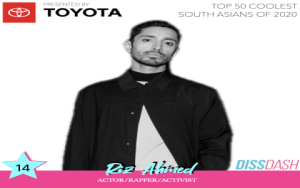
Critically laureled streaming shows are getting a lot of laughs these days by airing a heretofore-inordinate number of scenes involving actors going over their lines. In hits like The Studio and Hacks and Your Friends & Neighbors and The Righteous Gemstones, cutting, sniffing and hoovering is suddenly really, really, really funny stuff. (That is, if you don’t happen to be an intimate of the hundreds of thousands who have overdosed from batches cut with lethal fentanyl in recent years.)
At the same time, global cocaine production and consumption have skyrocketed. An estimated 25 million people used cocaine since 2023, according to a United Nations report issued in June. That figure is up from 17 million a decade earlier, according to The New York Times.
Yet who’s counting? What a buzz kill. The film title Cocaine Bear is funny unto itself.
Riding shotgun along with politically incorrect habits is a resurgence of smoking cigarettes in TV and film, where top shows like The Bear and The Materialist depict chain-smoking characters as hip and as sexy as in the film-noir era. Consider: It isn’t “retro” shows recapturing a louche moment when airlines had ashtrays built into armrests. Mad Men ended a decade ago.

Jake Giles Netter/HBO
There are countless sobering dramas, documentaries and films that depict the insidious repercussions of selling and snorting cocaine and leave a bitter taste in the gums, from Narcos, El Chapo and Breaking Bad to the popular Netflix docuseries Cocaine Air to big-screen classics like Scarface, Blow and Casino. Watching a coked-up Ray Liotta sweat bullets in Goodfellas‘ third act isn’t exactly an infomercial for the white stuff. But on the small screen now, “toot” usage is a hoot. In TV land, a celebratory party simply … isn’t … without a big blowout. A quick toot is even depicted as a resourceful way to get “the job” done. This isn’t your Scorsese rise-and-fall.
It’s now widely deployed as a comedic corpse (and show) reviver — fall and rise. And in more ways than one. A crazy coke scene can resolve a show’s story arcs. It’s always reliable as a plot device, particularly when a show is looking to score a next season. Bring out the Bolivian marching powder when writers have hit a wall.
Is it a coincidence that coke’s comeback is taking place under a nominally conservative, avowedly tough-on-crime administration led by a president who doesn’t drink or do drugs? Probably, since these shows were written well before Trump’s far-from-certain re-election. But it’s a fitting flashback to the Reagan era, America’s last golden age of conspicuous consumption, status obsession and decadent excess, the cauldron in which Trump’s legend was forged. Greed was good, debauchery was along for the ride, and cocaine was the ultimate catalyst.
On current streaming shows, there’s an element of nostalgia involved in the snorting of what Gilda Radner called “the devil’s dandruff.” The partaking characters are typically über-wealthy and powerful, often fallen men and women who turn to immoral tactics to get back what they had, and then some. Toot allures.
Cases in point, on Apple TV+’s The Studio, just renewed for a second season, box office-driven movie mogul Bryan Cranston — high on two-eighths of an ounce of magic mushrooms (a lot), post-“old-school Hollywood buffet” (as actor and show creator Seth Rogan’s nerdily opportunistic studio exec puts it) and out-of-his-mind wasted — is expected to make a conference presentation of his upcoming slate of film projects in the can. Jibber-jabbering inanities, Cranston’s cohorts find a solution: Pour coke down his nose. Revived and … ACTION! Conquests are celebrated by doing cocaine with no repercussions. They string him up like a marionette to a standing ovation.
A nearly identical gambit is depicted during the latest season of the Emmy-nabbing Max series Hacks. An out-of-control TikTok sensation played by Julianne Nicholson is so black-out hammered, her team decides there’s no means of resuscitation but to give her “big lines, big fat lines! GATOR TAILS!” An assistant screams, “BOOF her!” She isn’t “boofed” (coke-speak for insertion through an orifice not on the face), but she rights the sails enough to perform as “Dance Mom” with a celebrity guest on Deborah Vance’s show.
(A “boofing” reference alone on a television show is gold, Jerry, gold!)

Courtesy of Apple TV+
Not to mention HBO’s The Righteous Gemstones, in which cocaine is played for yuks with regularity. Brother Pastor Uncle Baby Billy Freeman, played by Walton Goggins, wears a pinky ring with a clamshell top that holds his blow. In one scene, Baby Billy pitches a show to his family members. It’s called Teenjus, short for Teen Jesus. To produce it, all he needs, he begs, is “an eight ball and $2 million.” In another scene, when Baby Billy is about to get his ass kicked, he pleads to the heavens, “Lord, God, bless this eight ball just one last time to give me the gas to beat these demons.” He still takes a beating. Funny!
On a final installment of Apple TV+’s Jon Hamm-driven dramedy Your Friends & Neighbors — episode eight, which has been called the eight-ball episode — the show features a boys’-night-out party scene. It makes a big blowout look like an awful lot of fun, especially since vicarious indulgence avoids the hangover, though it ends with the three main players laid out in the dark on a golf course with cart upturned … well, what a swell party it was. And it sets the course for Hamm’s fallen hedge fund manager turned burglar “Coop” to have a second life with season two.
That episode is called “When Did We Become These People?” — a reference to the opening lines of Jay McInerney’s coke-fueled, Reagan era-defining 1984 novel Bright Lights, Big City. Just in case you missed that reference, Hamm is seen dozing poolside with a copy of the book spread out on his chest.
It’s not just streaming series. Amazon Prime’s June-released feature Deep Cover similarly showcases a funny coke scene. Three improv actors (led by Orlando Bloom) hired by a narcotics squad get in over their heads. When a drug lord asks one of them, who had never done it before, to take “a bump,” the mobster thinks he wants more. And then makes him do three fatties. Mayhem ensues.

was a harbinger of today’s glut
of cocaine comedy.
Universal Pictures/Courtesy Everett Collection
Entertainers have long seen the drug’s comic potential even as they’ve acknowledged its perils. On a talk show before his suicide in 2014, Robin Williams joked about his addiction. “What a great drug! Any drug that makes you paranoid and impotent? How much fun can you have?” In a pre-election conversation on his chart-topping podcast last year, Theo Von told an uncharacteristically curious Trump about his recovery: “Cocaine will turn you into a damn owl, homie,” he told the ex/future president. “You’ll be your own street lamp.”
Until streaming liberated TV comedy from the standards and strictures of broadcast, you’d have been hard-pressed to sniff out a cocaine plotline in a sitcom. Imagine the cast of Seinfeld dishing coke from a ketchup ramekin at Monk’s Café. Or the characters from Friends sneaking into the bathroom at the Central Perk — even as we now know about Matthew Perry’s off-camera struggles.
Cinema was always a different story. Perhaps the seminal onscreen coke joke was Woody Allen’s sneezing into a bag of uncut powder in 1977’s Annie Hall. Or take the 1993 Tony Scott film True Romance, scripted by Quentin Tarantino, with its gonzo echo of the Annie Hall blow-up. As Bronson Pinchot’s hapless character, Elliot, is speeding in his ragtop Porsche with a girl bent over his lap along a 15 mph curve on Mulholland Drive, cop lights go off behind him. He has a big bag of stash on him. Begging that the girl stuff it in her purse or bra, she declines. No way. When he calls her a “fucking whore,” she throws the bag in his face. His visage a Kabuki mask of cocaine powder, all he can do is flash the officers a “search me?” smile.
“I don’t remember one iota of concern that the cocaine scene was in any way risqué,” Pinchot tells The Hollywood Reporter, adding that the cocaine stand-in was sifted flour. “PC had not yet really been invented,” he says.
“I’ve never done cocaine, nor even seen it,” Pinchot says. “But I personally find the topic of cocaine quaint, like the lurid one-sheet poster for Reefer Madness.”
We’ll have to wait until next season of the eternally boundary-pushing White Lotus to see if cocaine is still blowing in the wind. Or maybe it’s no fun if everybody’s doing it.
This story appeared in the July 9 issue of The Hollywood Reporter magazine. Click here to subscribe.
#Cocaine #Scripted #Shows






